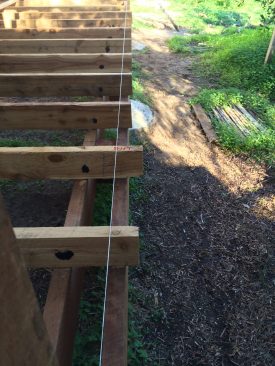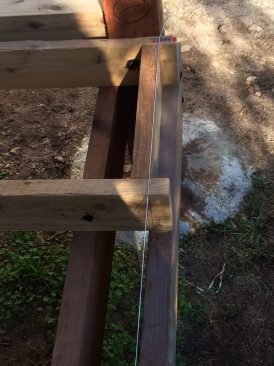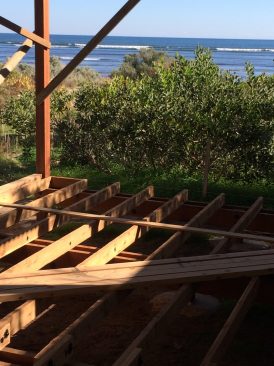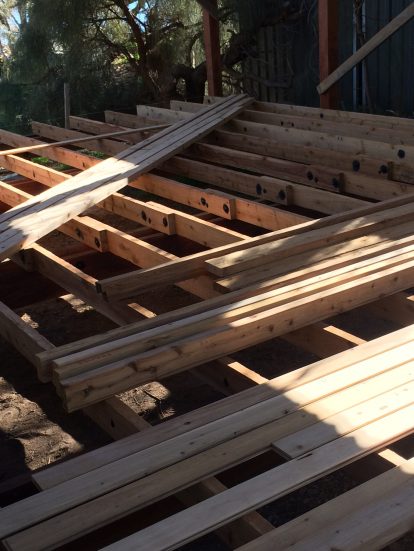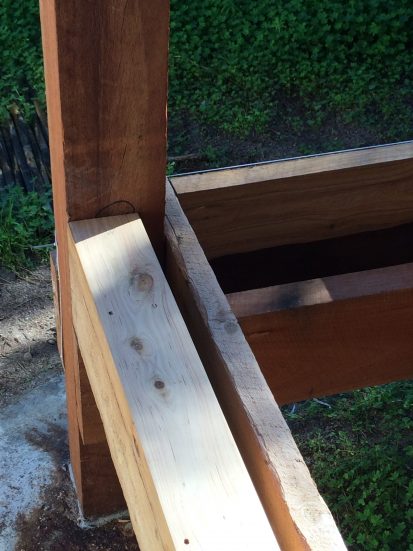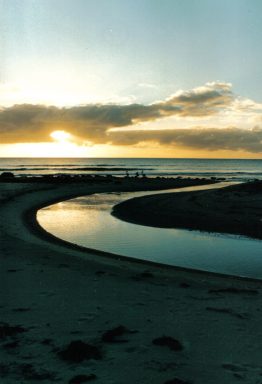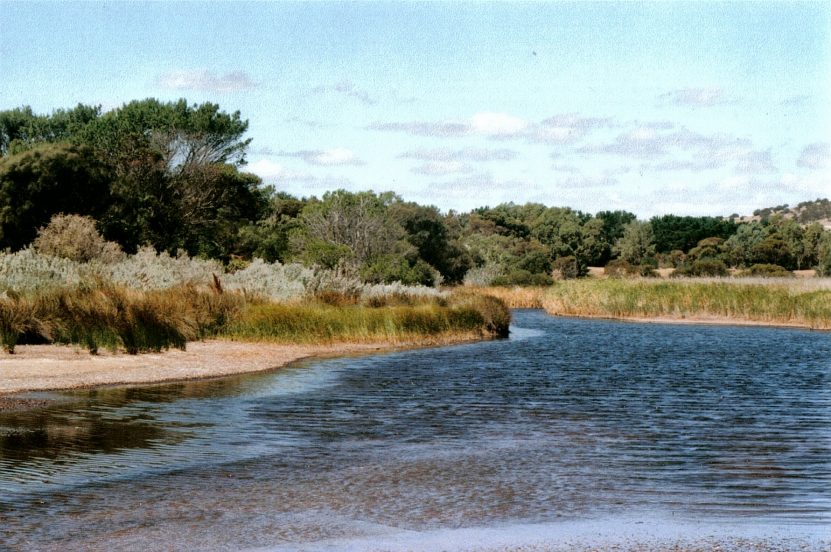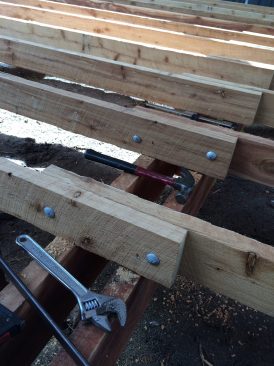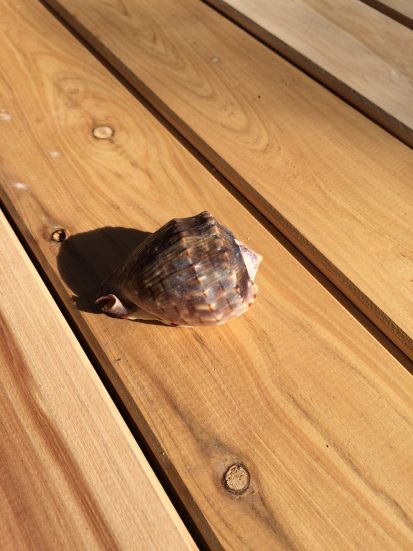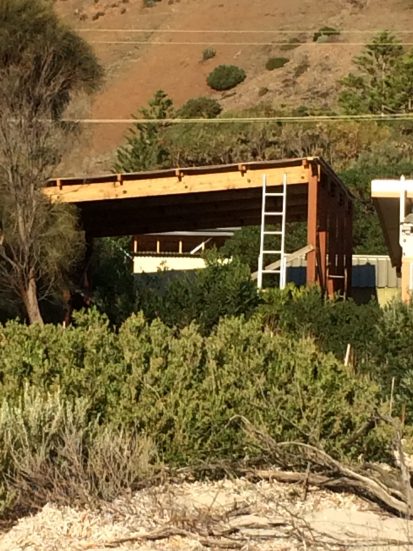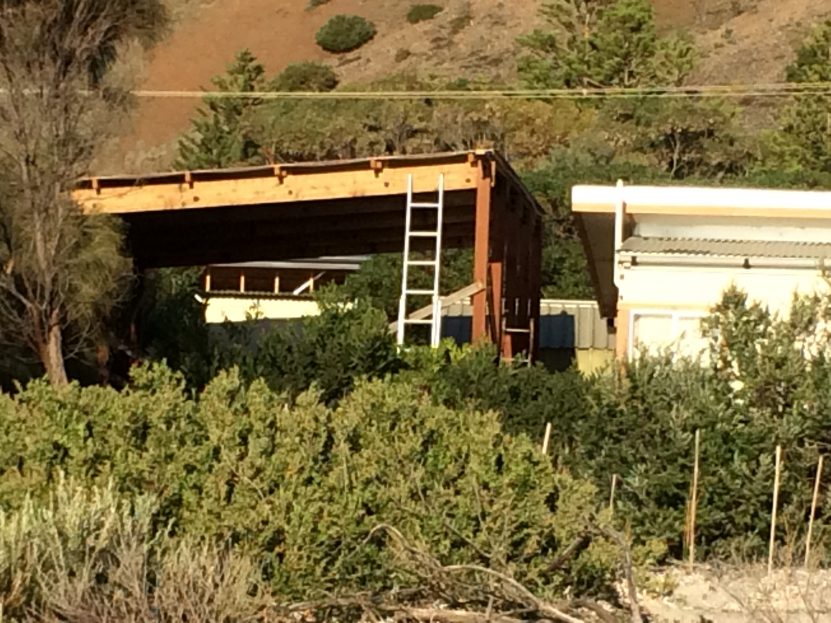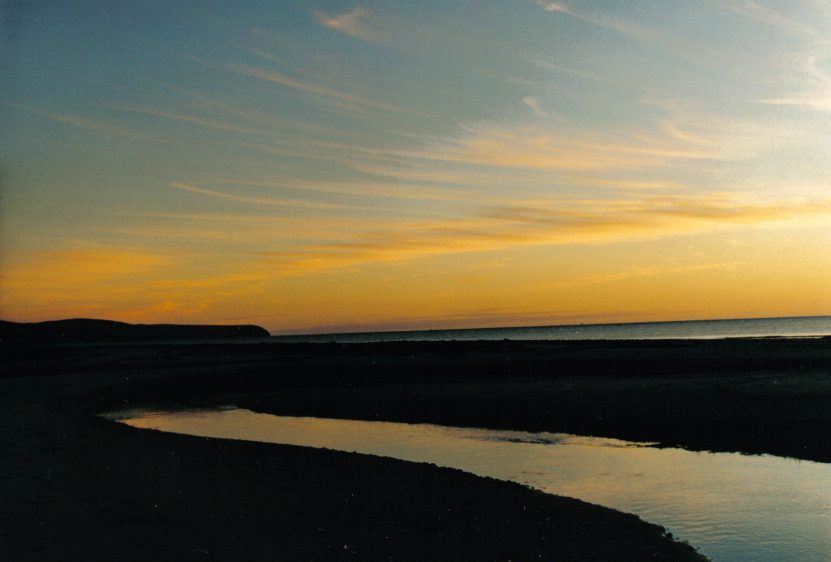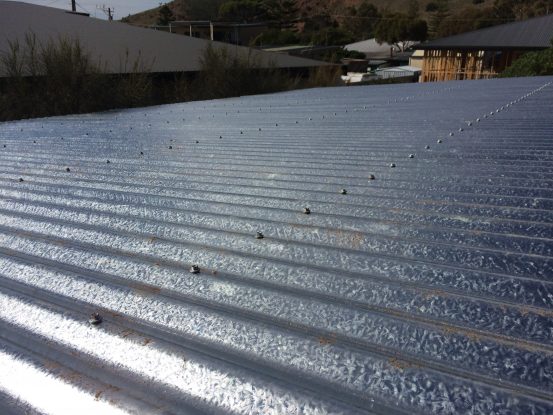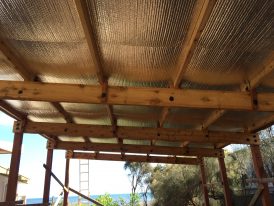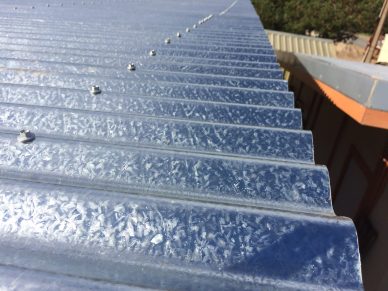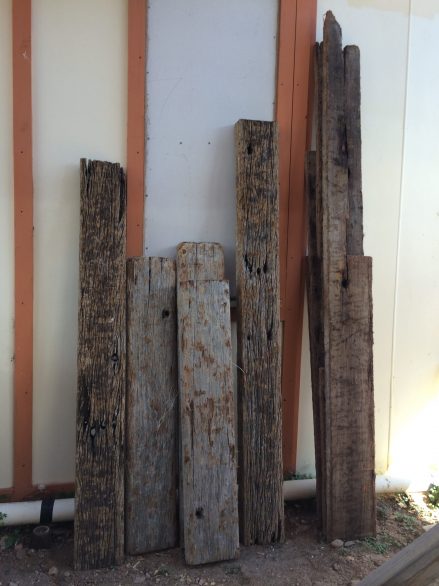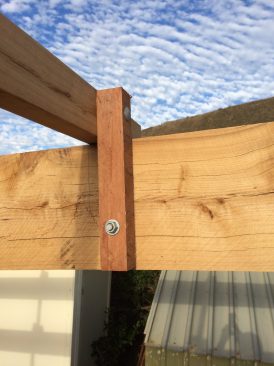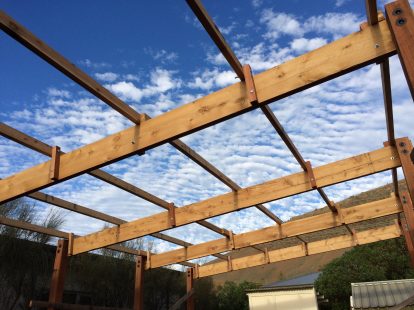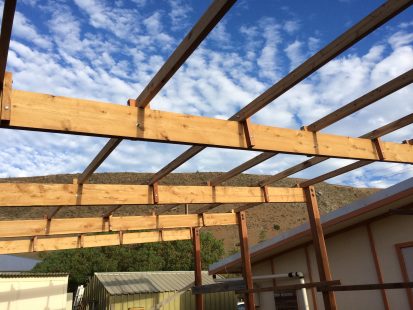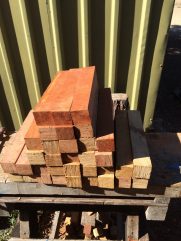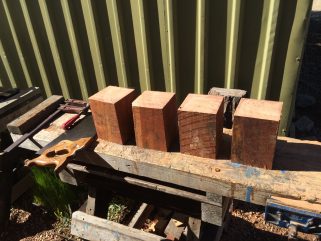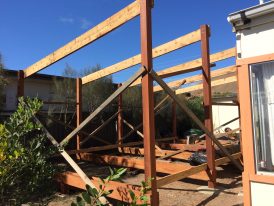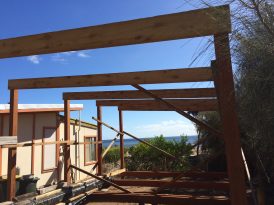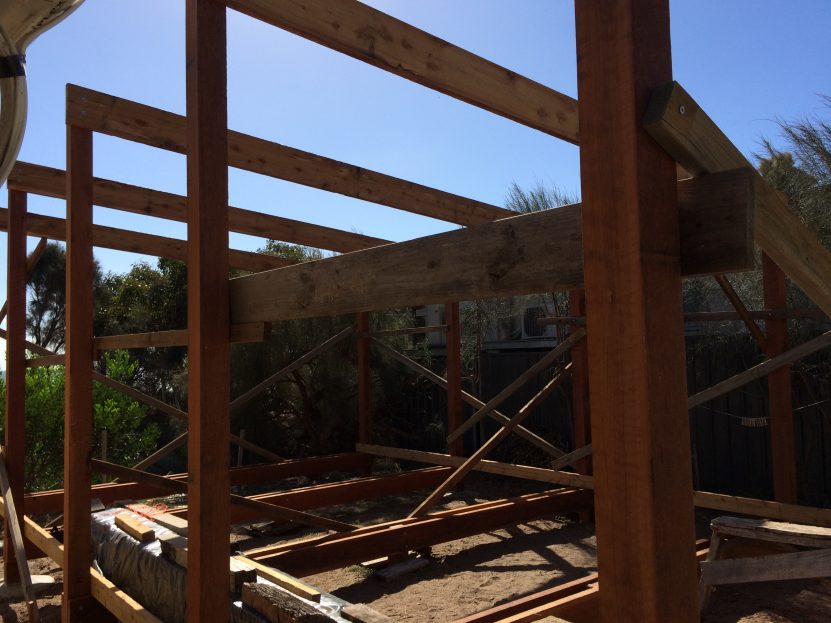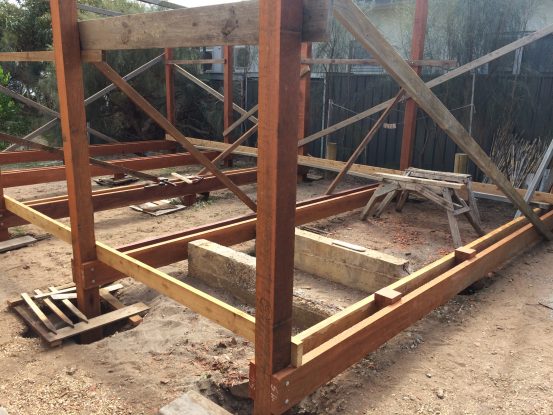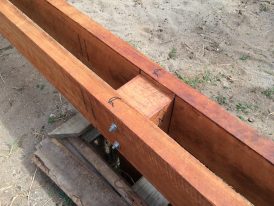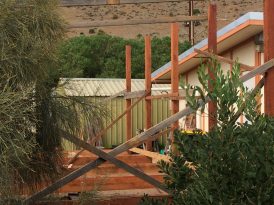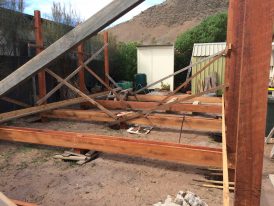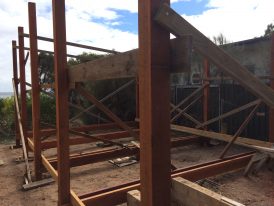Author: Chris Wells
ESTUARY
INSTALLING THE JOISTS
Westerly gales throughout the week tested our new roof. As far as I can judge, it did not shift by even a hair’s breadth. I would have been disappointed to find any change, however insignificant.
The storms washed up a perfect Helmet (Tiger) Shell. You can see it here, perched on the cypress floorboards.
Sam has recorded the next job: installation of the joists. I have already cut them to size, and placed them in position on the Ironbark bearers. Over the next few days, weather permitting, I will fasten them with (very long) skewed nails.
It is worth noting that once a nail is hammered into Ironbark, it cannot be extracted: it is locked in for life. I have therefore adopted and adapted Dad’s boatbuilding maxim, roughly translated: check your measurements twice (or thrice), before ‘hammering’ once. I hope it will save me a lot of heartache.
The native cypress, when cut with a saw, gives off an exhilirating fragrance, somewhat akin to the smell of Western Red Cedar or Baltic Pine, but more subtle. It is a fraction softer than Oregon, cuts sweetly, and has to be predrilled. Working with such lovely wood is a pleasure, and a privilege.
STORM
Early in the morning the sea-birds were to-ing and fro-ing along the shore-line. A storm is brewing, and I spotted two pelicans high up, drifting northwards on a mission known only to themselves. As you will recall, the late-Autumn winds here can be brisk; this will be the first Test for the galvanised iron roof. Long roofing screws hold it to the purlins; the purlins are skew-nailed into the roof beams, and doubly secured by the bolted soldiers; the roof beams are bolted to the Ironbark posts; the posts are sunk into deep holes, and held firm by the concrete. At the bottom of each post, a horizontal bar of iron further locks the Ironbark into the concrete.
I will report on the outcome.
Sam took these photos from the seaward side. Seen from the east, the Boatshed looks quite imposing, but when viewed from the western side, the beach, it fits comfortably into its space next to the shack. The dune shrubs soften any sharp edges, and I believe the weatherboard cladding (native cypress) will enhance the sense of ‘belonging’. Of course, everything at Lot 16 Lady Bay must be a bit cramped; it is a tiny block.
SUPPORTER
I wanted to record here the passing of a long-standing friend, the author Gillian Mears, who died this week aged 51. Right from the early days she was a generous advocate for ‘My Father as Mariner’ – and more recently, a keen supporter of hand-carved wooden spoons, and the Lady Bay Boatshed. She was a lover of rivers, estuaries, lakes and the wide ocean.
ROOF
PURLINS AND SOLDIERS
Day 5
DAY 5
Roland has kindly created this site, to record the construction of our Boatshed, and (possibly) subsequent boatbuilding projects. My grateful thanks to him for his generous help, and for offering it unasked. He had the vision, and the technical knowhow to make it happen.
Simon Scott has been working with me, every Friday, from the early days of construction, and will continue to be on hand until the roof is completed (next job). Simon is a man of many parts, and – fortunately for me – has a great deal of building experience and knowhow. Without his assistance, those extraordinarily heavy Ironbark posts would not be vertical.
My thanks also to fellow members of Silver Mist (SA) Pty. Ltd. for their steadfast support and encouragement over the months (and years).
This Week has seen steady, but modest progress. The photos (expertly taken by Sam, using his phone Device) tell the story, but may require some translation.
The posts, as implied above, will never again move, so I thought I might as well concrete them in, just to make sure (of course, it is specified in the plans). I have just finished the seventh hole; eight to go. I am mixing the concrete by hand – and if some of you are wondering why I am mixing concrete by hand, my best and only reply would be the one that a local shop assistant recently tried out on me: because I can.
At the time it seemed like an impressive response.
Sam has taken a photo of the Soldiers, which are made from from offcuts of Native Cypress and Ironbark. Each Soldier will be bolted vertically into a rafter, and a purlin, wherever a rafter and a purlin intersect. (Purlins are the long timbers running at right-angles to the rafters, onto which the roofing iron is fastened). The Soldiers should stop the roof coming off; I much prefer them to metal straps.
The twin bearers are Ironbark, of great weight and durability (Class 1). I am currently bolting sturdy Ironbark spacers between each double-bearer, as specified. The idea is this: if by chance our Boatshed is swept away by a hurricane, it will become airborne in one piece, and land in one piece, on its footings – and the boats inside will be undamaged.
Next job, and next Posting: the Roof.
